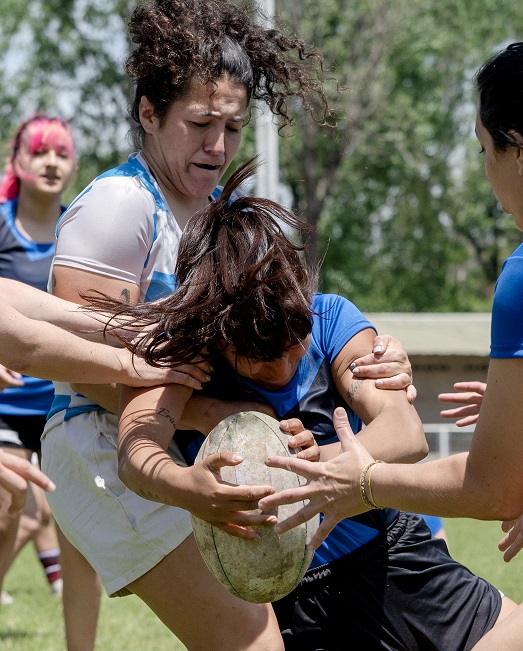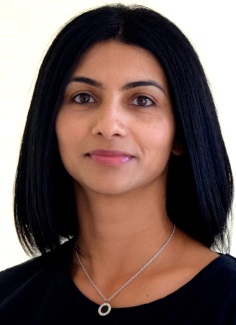Global
Copyright@ Australian Catholic University 1998-2025 | ABN 15 050 192 660 CRICOS registered provider: 00004G | PRV12008
Copyright@ Australian Catholic University 1998-2025 | ABN 15 050 192 660 CRICOS registered provider: 00004G | PRV12008

As a sports and musculoskeletal physiotherapist who has treated some of the world’s leading athletes, Shreya McLeod knows a thing or two about traumatic injuries. But it wasn’t until a family member took a blow to the head during a serious fall that she started to develop a deep interest in the topic of concussion.
In the days and weeks after the accident, McLeod and her family member bounced from practitioner to practitioner, searching for guidance on concussion-related care and treatment.
“We received really general advice, like ‘they need to rest’ or ‘they’ll get better in time’, but there was no clear plan and no clear timeline,” says McLeod, who commenced her academic career as physiotherapy lecturer at ACU in 2014, having previously treated elite tennis players and cricketers for more than a decade.
When she dipped into the scientific literature on concussion, McLeod was alarmed to discover a yawning gap between sports medicine research and the information being disseminated to the public.
“We found that after a concussion, individuals really should be engaging in regular exercise at two weeks post-concussion or even earlier, different to the advice we received,” she says. “It really opened my eyes to the lack of awareness around concussion, not only in the general population, but also among some in the medical community.”
In 2019, less than a year after her family member’s fall, McLeod commenced her postdoctoral thesis at the University of Newcastle, combining her clinical experience with her newfound interest in concussion. Her PhD research explores the prevention, identification, and management of concussion in female contact sports, looking specifically at the burgeoning National Rugby League Women’s Premiership.
“I have long had a passion for improving healthcare in women’s sport, so I guess the research married up two things I have a deep interest in,” says McLeod, a lecturer and course coordinator in undergraduate physiotherapy at ACU in North Sydney.
Her decision to embark on this journey came at a time when many were beginning to raise the alarm about the unique dangers of concussion to female athletes.
In the past decade, women’s sport has experienced unprecedented growth in popularity and participation, yet there has been very little brain research looking specifically at women.
“We are definitely seeing a trend towards there being several biological, physical, and hormonal differences that make women more susceptible to concussion than men,” says McLeod, who is a regular commentator on concussion in the media.
“However, due to the paucity of literature exploring concussion in women, at this stage there’s not a lot that we can say definitively. That’s why an increased focus on brain research looking specifically at females is so important – both in professional sport and in the wider population.”
The fact that women are underrepresented in sports medicine research is well-established, and studies on the effects of concussions are particularly scant.
This gender gap tends to mirror the inequality in the sporting arena more broadly, with women paid significantly less and excluded from some professional codes altogether. In Australia, for example, football was deemed “medically inappropriate” for females until the 1970s, with women instead encouraged to opt for non-contact sports like swimming and cycling.
“The reality is that women have historically competed at a non-professional level,” says McLeod, “and that has meant their sports have not been researched, and definitely not in a manner that recognises both the physical differences and the gendered aspects that may come into play.”
Despite recent progress, there is much work to be done to bridge the gap.
“Even now, when there is much greater representation in women’s sport, if the professional codes weren’t there, the research could not keep up because there’s simply no funding coming in to allow experts to gather the data on these populations.”
Encouragingly, McLeod is among a growing cohort of scholars who are focused on female-specific concussion research.
In recent years, her contemporaries have been able to establish that women have much higher rates of concussion compared to men, even in sports where they participate under the same rules.
While weaker neck muscles, the menstrual cycle, and the lack of sport-specific training are all likely to play a role in putting women at greater risk, McLeod once again cautions that the research is too limited to draw any strong conclusions.
She is thankful, however, that the issue of concussion in women’s sport is finally in the spotlight.
In Australia, public attention reached a peak in 2023, with the success of the FIFA Women’s World Cup.
For the first time, the tournament’s governing body employed “concussion spotters”, with strict protocols for returning to play following a suspected head collision. Record-breaking television and stadium audiences were able to observe players being assessed for concussion after on-field collisions.
And yet, McLeod points out that there is still no objective diagnostic test that can confirm the presence of concussion.
“It’s a clinical diagnosis undertaken by a medical professional, but that can be complicated by the tendency of athletes to underreport their symptoms,” she says.
“We’re looking for video signs of concussion such as a player lying motionless, or if they’re dazed or confused, if they stagger or have motor imbalance or are slowed in their movements. Those are the consensus and sport-specific signs that enable us to assess and diagnose concussion in the moment; however, for better or worse, many players just want to keep playing, and that means that sideline evaluations can be subjective.”
While previous generations of athletes were actively encouraged to “shake it off”, current guidelines advise a much greater level of caution.
“Even in community sports, there is definitely a lot more surveillance, and codes do take the ‘if in doubt, sit it out’ approach,” McLeod adds.
“That’s a really positive thing, but on the whole, it does indicate that we’re still looking at concussion mainly through a sports lens.
“There’s a bulk of people here who we’re missing – those who experience concussion from falls, accidents, and violent assaults including intimate partner violence, which is another major cause of concussions in women. These are the areas that need a lot more focus and attention.”
Despite the intense media attention on sports-related concussion, research has shown that it occurs far more commonly in non-sport contexts.
It is also likely that concussion-related injury is far more prevalent than the data suggests.
“Concussion tends to be poorly reported because the symptoms of concussion can be very vague, and often people don’t associate the things that they’re experiencing with their concussion,” says McLeod, noting that symptoms can include anything from headaches and nausea to depression and anxiety.
While most recover quickly without complications, a small proportion of people experience symptoms for a prolonged period.
“We know that when patients present to a doctor or concussion clinic for early assessment, their chances of recovery are significantly better. So, even though most concussions are self-limiting, with symptoms resolving within a week or two, it’s certainly the safest bet to seek medical attention as early as possible.”
With her ground-breaking PhD thesis due to be completed in 2024, McLeod is looking to explore concussion in other female sporting codes, while also working to improve education and awareness across the community.
She hopes that in future, people like her family member, who do seek guidance on their head injuries, are given advice that is both current and evidence-based.
“That’s the ultimate goal – to forge a better understanding in the community about the risks of concussion and how best to deal with symptoms, so their condition is dealt with swiftly and they minimise the risk of a prolonged recovery,” she says.
“We need to educate GPs and healthcare practitioners working in this space on the graduated return to play process. We need sports coaches, teachers, and parents who are mindful of the signs they need to look for. We need concussion clinics where people have access to a multidisciplinary team, so they’re not left to search on their own for the appropriate treatment, and they receive the kind of medical care they expect and deserve.”
Shreya McLeod is a lecturer and course coordinator in the undergraduate physiotherapy program at ACU’s School of Allied Health. She is also a registered sports and musculoskeletal physiotherapist with extensive experience treating elite athletes internationally.

For more information on how to manage concussion, see the Australian Sports Commission’s guidelines for athletes, parents and teachers, coaches and support staff, and medical practitioners.
Copyright@ Australian Catholic University 1998-2025 | ABN 15 050 192 660 CRICOS registered provider: 00004G | PRV12008